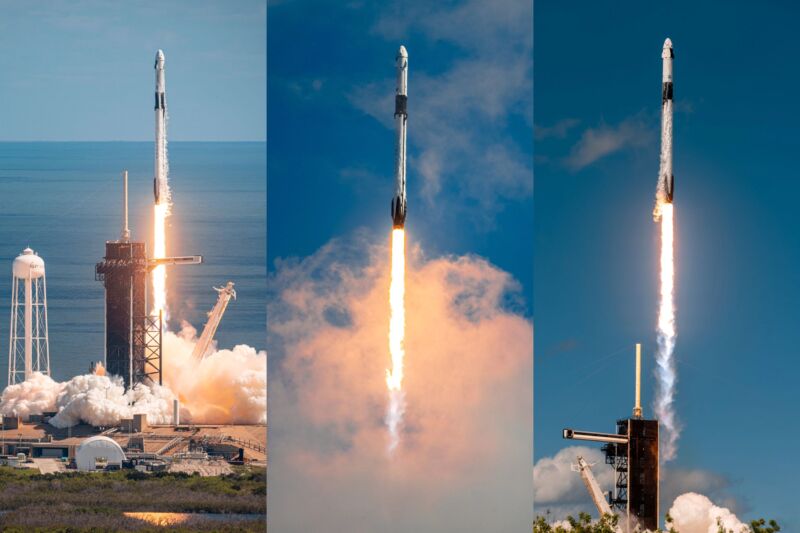Welcome to Edition 5.13 of the Rocket Report! Lots of news to discuss this week, as usual. Also, be on the lookout for a report from me early next week with some new information about a Washington-based startup, Stoke Space, working to develop a fully reusable rocket. They're beginning to make some credible progress.
As always, we welcome reader submissions, and if you don't want to miss an issue, please subscribe using the box below (the form will not appear on AMP-enabled versions of the site). Each report will include information on small-, medium-, and heavy-lift rockets as well as a quick look ahead at the next three launches on the calendar.

Firefly reaches orbit, but ... Powered by four Reaver engines, Firefly's Alpha rocket lifted off from Vandenberg Space Force Base at 12:01 am local time on Saturday, delivering several small payloads into low Earth orbit after relighting its upper stage. This success followed an initial launch attempt in September 2021, where one of the four Reaver engines failed during ascent. With this second launch, the Alpha rocket became the first of a new generation of rockets capable of lifting approximately one metric ton to reach orbit, Ars reports.
A successful failure? ... The rocket was intended to place the small satellites on board into a circular orbit at an altitude of 300 km. However, independent observations later placed them considerably lower, at approximately 200 km. Due to this underperformance of the vehicle—it is not clear what the precise problem was—the tracking firm Seradata said it was now classifying the mission as a "launch failure," with a provisional capability loss of 90 percent due to the likely life loss for the seven satellites aboard. My less harsh judgment is that reaching orbit on a second flight is a success. Ars has reached out to Firefly for more information.
(submitted by EllPeaTea and Ken the Bin)
SpinLaunch conducts 10th flight test. The company that uses a centrifuge to accelerate payloads prior to their release announced this week that it has completed its 10th successful flight test of its suborbital accelerator. The flight test, which occurred on September 27, "demonstrated that SpinLaunch partners’ standard satellite components are inherently compatible with the company’s launch environment and provided critical flight data, as all payloads were flown and recovered successfully."
Previous flights to 9 km ... As is customary with its announcement of tests, SpinLaunch declined to release specific information about altitude or flight duration. However, a spokesperson told Ars that this test was intended primarily to ensure the "compatibility" of the payloads with the SpinLaunch system. Previous flights went higher, apparently. "The system had already demonstrated the ability to operate in excess of 1,000 mph and attain 30,000 feet," the spokesperson said.
Virgin Orbit working "permitting" process. The US launch company announced Wednesday that the LauncherOne vehicle for the company's next mission has completed a "full launch rehearsal" and is now ready for flight. This will be Virgin Orbit's historic first mission from a spaceport in Cornwall, England, which will be the first orbital launch from that country. This milestone marked the final acceptance test of the rocket prior to mating it to its carrier aircraft, a Boeing 747.
Dealing with those persnickety permitters ... However, the company declined to set a launch date for the mission. "The window for the company’s next launch, planned to be the first orbital space launch from the U.K., will be determined by the launch permitting regulatory process," Virgin Orbit said. This will be the sixth overall mission for LauncherOne and would be its fifth success in a row if the "Straight Up" flight reaches orbit. This is the company's third launch attempt of 2022. (submitted by Ken the Bin)
ABL Space targeting mid-October. In a series of recent tweets, ABL Space Systems provided some additional information about the debut launch attempt for its RS1 rocket. The launch date is now targeted for no earlier than mid-October, the company said, as its launch license from the Federal Aviation Administration remains pending. The rocket will carry a commercial payload consisting of two OmniTeq satellites. The mission will seek to demonstrate the successful use of OmniTeq’s Equalizer deployer and operation of its Varisat HF payload.
Years of work to reach this point ... After launching from Kodiak spaceport in Alaska, the RS1 rocket will deploy the two satellites near Hawaii and complete its mission over the southern region of the African continent. This week the company also released a four-minute video with behind-the-scenes footage of all the work that has gone into the RS1 vehicle over the last five years. It looks like a lot of hard work by some dedicated people. Certainly, we wish them well.




3175x175(CURRENT).thumb.jpg.b05acc060982b36f5891ba728e6d953c.jpg)

Recommended Comments
There are no comments to display.
Join the conversation
You can post now and register later. If you have an account, sign in now to post with your account.
Note: Your post will require moderator approval before it will be visible.